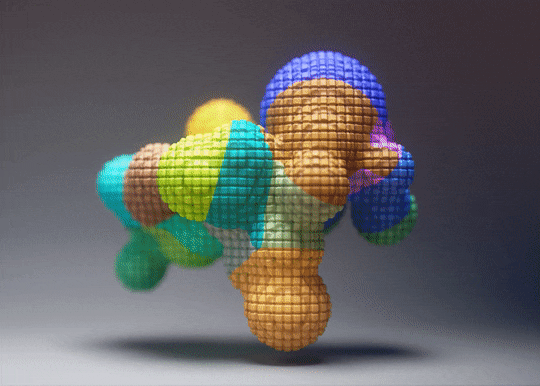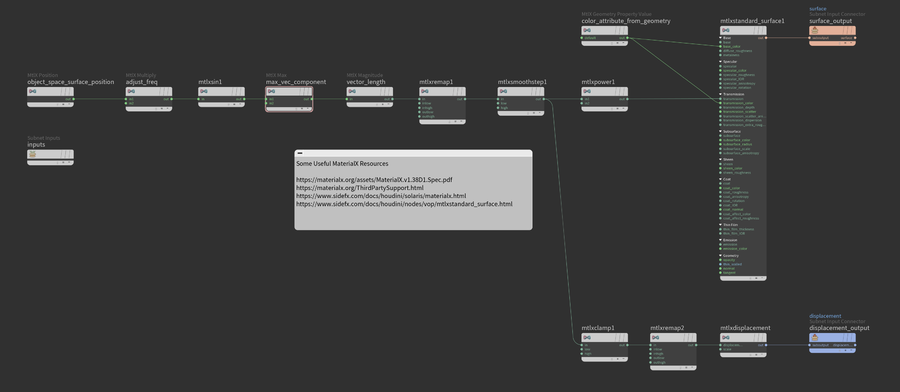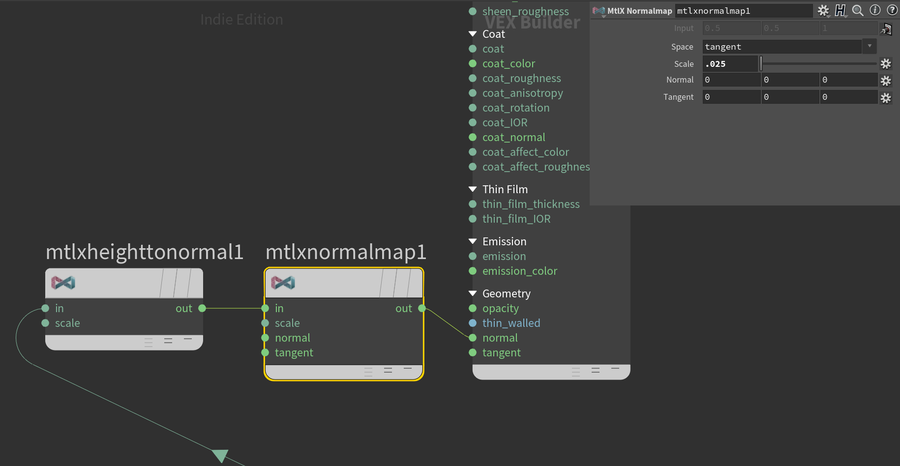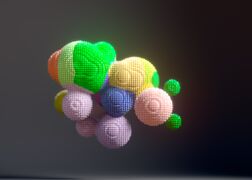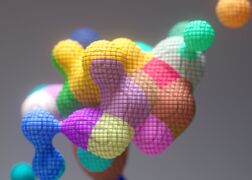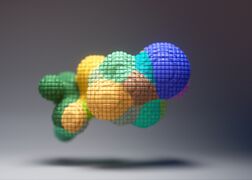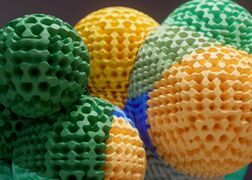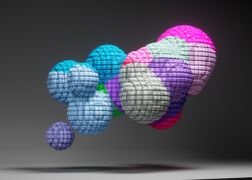Difference between revisions of "Live 2022.08.23"
Views
Actions
Namespaces
Variants
Tools
 |
|||
| (30 intermediate revisions by the same user not shown) | |||
| Line 4: | Line 4: | ||
== Scene File == | == Scene File == | ||
Download the Houdini file: [[:File:2022_08_23_materialx_USD_008.hiplc|2022_08_23_materialx_USD_008.hiplc]] | |||
== Summary == | == Summary == | ||
Building a shader from scratch in Solaris with MaterialX. The color values are retrieved from the geometry "Cd" attribute and the displacement pattern is generated using MaterialX math nodes to remap the surface position to a waffle grid-like bumpy pattern. | |||
Below is the MaterialX shading network. | |||
[[File:Screenshot_at_2022-09-09_13-00-32.png | 900px]] | |||
== Video On Demand == | == Video On Demand == | ||
<youtube>HDgPeE05wrE</ | <embedvideo service="youtube" dimensions="900x500" urlargs="modestbranding=1&showinfo=0">https://www.youtube.com/watch?v=HDgPeE05wrE</embedvideo> | ||
* 00:00 Solaris LOP Stage introduction | * 00:00 Solaris LOP Stage introduction | ||
* 02:50 LOP node concepts | * 02:50 LOP node concepts | ||
| Line 34: | Line 29: | ||
* 1:16:00 Adjusting camera composition and render settings | * 1:16:00 Adjusting camera composition and render settings | ||
[[ | During the live stream, I didn't connect the height to normal node properly which was causing the shading artifacts. To fix this, you can add a normal map node in between the shader connection like so. | ||
 | |||
[[File:Screenshot_at_2022-09-09_14-39-32.png | 900px]] | |||
[[: | == Links == | ||
You can read more about using [https://github.com/AcademySoftwareFoundation/MaterialX#readme MaterialX] in Karma and Solaris [https://www.sidefx.com/docs/houdini/solaris/materialx.html here]. | |||
[[: | The [https://www.sidefx.com/docs/houdini/nodes/vop/mtlxstandard_surface.html MtlX Standard Surface] node is based off of the [https://autodesk.github.io/standard-surface/ Autodesk Standard Surface] | ||
 | |||
For more details, see the [https://materialx.org/assets/MaterialX.v1.38.Spec.pdf MaterialX specification] on the nodes, functionality and capabilities. | |||
== Additional Images == | == Additional Images == | ||
<gallery mode="packed"> | |||
File:2022_08_23_material_USD_001.jpeg | |||
File:2022_08_23_material_USD_009_cam2.jpeg | |||
File:2022_08_23_material_USD_008.jpeg | |||
File:2022_08_23_material_USD_009_cam1.jpeg | |||
File:2022_08_23_materialX_USD_009_cam4.jpeg | |||
 | |||
</gallery> | |||
Latest revision as of 16:26, 17 September 2022
Shading techniques for Solaris, USD and MaterialX
Scene File
Download the Houdini file: 2022_08_23_materialx_USD_008.hiplc
Summary
Building a shader from scratch in Solaris with MaterialX. The color values are retrieved from the geometry "Cd" attribute and the displacement pattern is generated using MaterialX math nodes to remap the surface position to a waffle grid-like bumpy pattern.
Below is the MaterialX shading network.
Video On Demand
- 00:00 Solaris LOP Stage introduction
- 02:50 LOP node concepts
- 09:10 Making a MaterialX shader
- 14:30 Using geometry attributes in MaterialX
- 15:30 Using other geometry properties to generate patterns
- 24:10 Enabling ACES through the SideFX Labs menu
- 34:40 Modeling a blobby shape
- 45:10 Adjusting lights and materials for the blobby shape
- 1:00:00 Looking at the structure of USD files
- 1:03:00 Adding studio backdrop geometry
- 1:16:00 Adjusting camera composition and render settings
During the live stream, I didn't connect the height to normal node properly which was causing the shading artifacts. To fix this, you can add a normal map node in between the shader connection like so.
Links
You can read more about using MaterialX in Karma and Solaris here.
The MtlX Standard Surface node is based off of the Autodesk Standard Surface
For more details, see the MaterialX specification on the nodes, functionality and capabilities.
